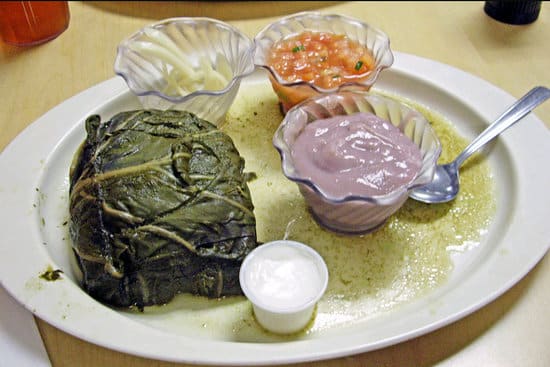Individuals point out issues like “fish and poi” as traditional Hawaiian meals. Fish from the ocean, and a local dish from the taro root that we name “poi”. The normal Hawaiian weight loss program developed with quite a lot of laborious work.
As soon as the traditional voyaging canoes landed on these barren volcanic islands centuries in the past, the kanaka maoli (Native Hawaiians) found that the Hawaiian islands had a pure and pristine water provide fed by gushing waterfalls provided by tropical rains.
The unfished oceans surrounding them have been teeming with edible seafood. Villages relied on their mahi‘ai or farmers, and the lawai‘a or fishermen, to provide a gentle provide of fish, shellfish, bananas, coconuts, taro for poi, yams, breadfruit, candy potato, mountain apple and sugarcane. The kanaka maoli fed their rising inhabitants remoted from the remainder of the world earlier than European contact.
The Native Hawaiians’ conventional weight loss program was a wholesome mixture of seafood and vegetation. Quick ahead to the 21st century, and conventional Hawaiian meals isn’t very simple to search out anymore.
Fashionable “Hawaiian” cuisine is a mixture of Hawaiian, Asian, European and American meals with an island twist. Right here in Hawai’i we name this “Hawaiian” delicacies “native meals” as a result of it’s a mixture from immigrant teams who got here to Hawai’i.
Many guests to Hawai‘i go away with out ever tasting conventional Hawaiian meals.
10 Conventional Hawaiian Meals You Should Attempt
- Laulau – Laulau is a conventional Hawaiian dish wherein pork, fish, or rooster is wrapped in taro leaves after which steamed, baked, or cooked in an underground oven known as an imu. Every laulau is folded into an outer wrapping of massive inexperienced ti leaves, a neighborhood plant that protects the meals and locks in its juices whereas it cooks. The dish has a young, earthy taste and is commonly a part of a Hawaiian plate lunch alongside poi (a taro root paste) and lomi lomi salmon.
- A Bowl of Poi – Poi is a Hawaiian staple of mashed taro root blended with water till it reaches a clean, pudding-like consistency. It has a barely bitter style on account of pure fermentation and is commonly served alongside laulau, kalua pig and different conventional dishes.
- Kalua Pig – A slow-roasted pork dish historically cooked in an underground imu (oven) lined over with lava rocks and banana leaves. The pork is seasoned with Hawaiian sea salt and wrapped in banana or ti leaves, leading to smoky kalua pork meat that’s typically served at luaus and different celebrations when it’s falling-apart tender.
- Lomi Lomi Salmon – A Hawaiian aspect dish made with salted salmon, diced tomatoes, onions, and generally inexperienced onions. The elements are massaged (“lomi lomi” means “to therapeutic massage” in Hawaiian) collectively to create a refreshing and flavorful dish that pairs effectively with poi or rice. Historic Hawaiians salted salmon and different meals with the salt collected from dried ocean water on shoreline rocks.
- Poke – (pronounced poh-kay) is certainly one of Hawai‘i’s well-known conventional dishes. This uncooked fish salad, historically made with ahi tuna (yellowfin) or aku (skipjack tuna), is marinated in soy sauce, sesame oil, and inexperienced onions. Different variations embrace octopus (tako poke), salmon, and even tofu for a vegetarian choice. Trendy twists incorporate spicy mayo, avocado, or seaweed for further taste.
- Opihi – a sort of Hawaiian limpet (sea snail) served uncooked with a little bit of shoyu (soy sauce) and sea salt. It’s a uncommon delicacy harvested from rocky cliffs that tough ocean waves crash in opposition to.
- Squid Luau – a dish of squid stewed in a creamy combination of taro leaves and coconut milk. The mix of ocean flavors with the richness of coconut makes it a singular and beloved dish.
- Breadfruit – Historic Hawaiian settlers introduced “canoe vegetation” that they saved on their canoes to regrow after touchdown. Breadfruit was a part of this meals storage. It grows on giant bushes, and the fruit has versatile makes use of. We eat breadfruit boiled or baked. It was a staple of the normal Hawaiian weight loss program. It tastes like a potato, and cooks up deliciously in coconut milk.
- Haupia – a coconut-based dessert, much like a pudding or gelatin. Comprised of coconut milk, sugar, and thickened with cornstarch. This deal with has a clean, creamy texture. Cooks lower and serve this dessert in small squares at luaus and different gatherings. Trendy recipes mix haupia with chocolate to make muffins and pies.
- Kulolo – It is a chewy Hawaiian dessert of taro, coconut, and sugar, with a texture much like fudge and a taste much like caramel.
Learn concerning the evolution of the Hawaiian lu‘au
Poke 101: All About Uncooked Fish
Poke is so common right here in Hawai’i, that we will purchase it at our grocery retailer delis. It’s the sorts of poke that make the distinction to most locals, and what number of decisions a retailer affords.
Tamashiro Market in Honolulu has an unimaginable number of Hawaiian seafood. Housed within the floor ground of an ageing pink constructing with an enormous purple lobster hanging out entrance, Tamashiro’s is an iconic seafood market within the Kalihi-Palama neighborhood of Honolulu. Recognized for having the freshest uncooked fish on the town, the Tamashiros have been making poke lengthy earlier than it grew to become common. They’ve all the native favorites: ‘ahi limu, spicy ‘ahi, ‘ahi shoyu, aku limu, ‘ahi onion, ‘ahi chili poke, and on and on.
Right here’s somewhat Poke 101. There are two sorts of tuna which are used to make poke. ‘Ahi is the Hawaiian word for yellowfin or big-eye tuna. Aku is skipjack tuna. The principle distinction between these tunas is the colour and style.
‘Ahi is a paler pink shade and has a fairly impartial style. It doesn’t style ‘fishy’ if you recognize what I imply. Aku is a deep purple shade and has a extra pronounced fish style. Many locals favor the aku poke as a result of that’s why you’re shopping for poke – to eat uncooked fish. However my favourite is spicy ‘ahi poke with contemporary ahi in a mayonnaise and Sriracha sauce combine. Fairly decadent.
Now that you recognize what ‘ahi and aku imply, you’ll be capable to perceive the labels on the poke shows. ‘Ahi limu (with seaweed), ‘ahi shoyu (with soy sauce), ‘ahi onion (with onion), ‘ahi chili poke (with chili peppers or chili pepper water). Aku poke will include all the similar combos.
The place to Get the Greatest Hawaiian Meals
Helena’s Hawaiian Meals – Honolulu
It’s getting tougher to search out eating places specializing in conventional Hawaiian meals. There are eateries the place you will see that laulau or a kalua pig lunch plate together with native dishes, however fewer the place yow will discover Hawaiian meals all on one plate with poi.
Helena’s Hawaiian Food has been serving Hawaiian meals since 1946 when Helen Chock opened the doorways to her humble eatery in Honolulu. For nearly 80 years, this family-owned restaurant has been cooking up conventional Hawaiian delicacies.
In 2000, the James Beard Basis awarded the Regional Basic Award to Helena’s Hawaiian Meals. It’s nonetheless the straightforward eatery it was a long time in the past. Craig Katsuyoshi, Helen’s grandson, now runs the restaurant.
You possibly can order ala carte gadgets from the menu, or a meal with the entire works! You’ll discover Helena’s Hawaiian Meals at 1240 North Faculty St.
Waiahole Poi Manufacturing unit – Kane’ohe
For greater than 50 years, the Hoe Household has owned The Waiahole Poi Factory in Kane‘ohe, O‘ahu . Though it’s not a poi manufacturing unit anymore, they concentrate on serving Hawaiian meals and hand-pounded poi which isn’t simple to search out.
To make hand-pounded poi, they harvest taro root, boil it till tender, take away the outer pores and skin, and use a stone poi pounder to mash it, including somewhat water periodically till it reaches a clean consistency. A stone poi pounder can weigh between three kilos and 10 kilos or extra. No surprise machines course of most poi in the present day!
When you’re heading to the North Shore of O’ahu by means of Kane‘ohe, you’ll cross this little century-old picket constructing on the left-hand aspect of the road with a number of tables and chairs out entrance. Don’t blink. Waiahole could be very simple to overlook.
When you aren’t hungry sufficient to have an enormous plate of Hawaiian meals, attempt their particular Hawaiian dessert – Candy Girl of Waiahole. It’s named after the long-lasting 1980’s Jawaiian tune by Brudda Waltah. The dessert is haupia ice cream on prime of heat kulolo.
Kuhio Grille – Hilo
Kuhio Grille is the house of the One Pound Laulau at their restaurant in Hilo on the Big Island. Whoever mentioned “greater isn’t higher” hasn’t been to Kuhio Grille. Their dessert tray is superior too, with native favorites like macadamia nut cream pie, candy potato haupia pie, and crunchy peanut butter mochi.
Kuhio Grille is at 80 Pauahi Road in Hilo.

Right here’s some ideas for the place to get good native meals close to you
Discover Kaua‘i delicacies with Taste of Kaua‘i
Maintain Your Eyes Open for Roadside Meals Distributors

A number of the finest conventional Hawaiian meals sells roadside in pop-up tents. Excessive land prices in Hawai‘i and the prices of opening a restaurant stop this meals from attending to market. There are additionally meals vans that serve restricted Hawaiian meals together with native dishes. None have poi or rarities like opihi or kulolo.
I’ve a pop-up vendor I purchase from once I want laulau. Others promote kalua pig, opihi contemporary from the ocean, and haupia.
There’s one other household that makes contemporary kulolo. After they pitch their tent and put up their signal, they promote out in lower than an hour. It takes quite a lot of time to grate contemporary coconut to make kulolo. I all the time really feel like I scored a win once I purchase their kulolo!






